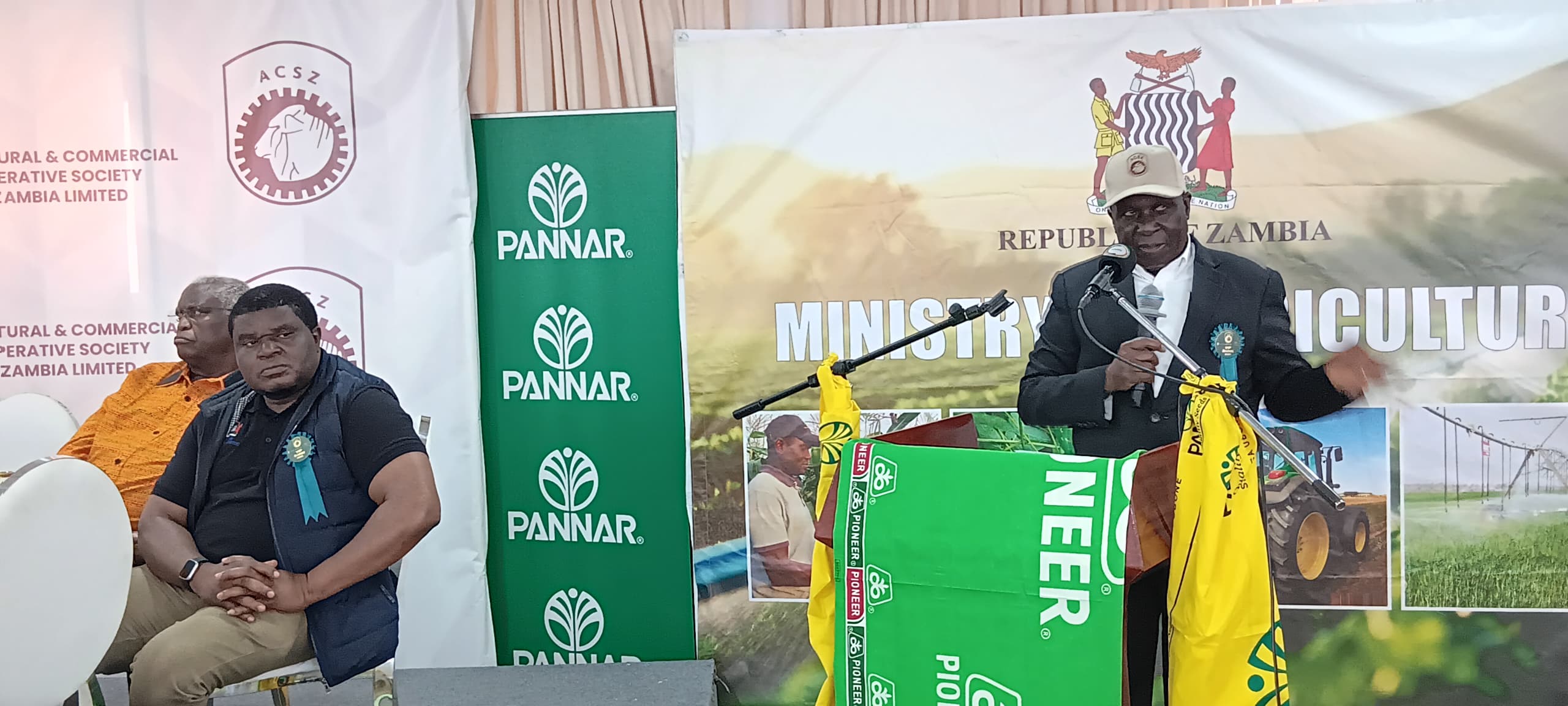
The call to action and applying strategic interventions in various farming communities, is to insulate the country’s agriculture sector after experiencing a worsened drought in 2023/24 farming season which dwarfed the country’s food security by half of the average 3.4 million tons of maize produced annually.
“This theme therefore, is a timely and compelling call to action that speaks directly to my ministry’s agenda. We all know that climate change is no longer a distant threat, it is a reality we face today and as such, our response must be deliberate, innovative, and inclusive.”
The models include the roll out of the Comprehensive Agricultural Transformation Support Programme (CATSP) backed by solid partnerships, robust technical design and the firm Government’s political will to guarantee sustained support for agriculture development.
In the 2024/2025 farming season, the Government through its input-subsidy support program (FISP) accounted for a staggering 1,024,434 farmers across all 116 districts of which 285,168 received inputs through the direct input supply modality, while 739,266 benefited under the electronic voucher (e-voucher) system.
The comprehensive review of the e-voucher system being reviewed to prop up efficiency is not for mere technological design but a co-existence with farmers, agro dealers while building a smarter and more responsive and durable support mechanism.
preliminary results from 74 districts where the e-voucher was implemented are promising. and as such over 1 million farmers were verified on the Zambia integrated agricultural management information system (ZIAMIS), with a 99% redemption rate achieved as early as November 2024.
The assessment also engaged 631 agro-dealers and created over 5,000 seasonal jobs.
The Government plans in the coming 2025/26 season effectively migrate the farmer input support programme (FISP) to the electronic voucher system in all districts it is applicable, a policy shift from the earlier Direct Input Supply System, now retained in 42 districts in the current season.
Minister Mtolo said efforts are underway to promote intercropping, cover cropping, and crop rotation to champion diversification and enhance the climate change fight through training for farmers and extension officers.
The National Mechanisation Strategy, the 2024/25 crop forecasting survey shows a need to increase in the area planted under millet, groundnuts, sorghum, Irish potatoes and cowpeas, a clear demonstration of the changing people’s mindset of the farmers across the country.
Zambia last year operationalized 40 mechanisation centres and 10 centres of excellence, serving over 2,500 farmers. Our national target remains the establishment of 696 mechanisation centres for each province to use.
Efforts are underway to collaborate with lending institutions to facilitate cheap financing to support farmers through the Sustained Agricultural growth sector being an enabler for economic growth.
Dialogue is underway with commercial banks to hasten the SAFF for access by farmers at negotiated rates. President Hakainde Hichilema seeks to convince lending institutions to low rates to affordable standards with farmers expected to only pay an extra 2 percent on rates to be created.
The dialogue will also be used to convince banks to ensure retention of SAFF convince banks to facilitate an expanded access to credit for inputs, irrigation, mechanisation and aquaculture.
Zambia last season harvested over 3.7 million tons of maize, exceeding our national food requirement of 3,539,024 metric tons. Wheat production stood at 129,524 metric tons, cassava flour at 791,913 metric tons, and paddy rice at 39,457 metric tons.
Output for soya beans will be released following the October 2025 post-harvest survey. The crop output is envisioned to actualize the Government’s desire to achieve the 2031 national targets of 10 million metric tons of maize and 1 million metric tons’ wheat and 1 million metric tons’ soybeans annually.
“this agricultural success is driven by timely input distribution, emergency irrigation responses, promotion of drought-tolerant seed varieties, and strategic programmes such as CATSP and mechanise 360.”
There are ongoing programmes to scale up investment in irrigation, conservation farming, and climate-resilient technologies. in areas without irrigation infrastructure, we are supporting rain-fed wheat production.
Investing in irrigation, early warning systems, drought tolerant crops, and smart technologies to safeguard the country’s food systems.
THE 2023/2024 drought underscored our agricultural vulnerabilities and in response. To reduce the fluency of post-harvest losses, the government is increasing food reserve agency (FRA) storage capacity to 1.5 million metric tons and introducing the warehouse receipt system to enhance market access and farmer financing.
And during the97th agriculture show that closed its doors on Monday, the agriculture ministry scooped various awards by various departments and affiliated Training Institutions
The Zambia Agricultural Research Institute (ZARI), which was awarded First Prize for Best Exhibit in the Ministry of Agriculture category.
The Department of Agriculture was recognised with the Second Prize, while the Seed Control and Certification Institute (SCCI) secured the Third Prize, both of whom showcased innovations that address real challenges faced by farmers.
Natural Resources Development College (NRDC) emerged First in the category and also received the Third Prize in the Beef Junior Bull category.
The ZCH (Chapula) claimed Second Place, while Zambia College of Agriculture – Monze took Third Place. Popota Agriculture College and Zambia College of Agriculture – Monze were also honoured with Highly Commended Awards.
